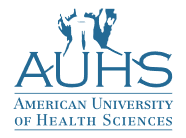Public Health and Socioeconomic Implication of ‘Long COVID-19’: An International Collaborative Study with U.S. Leadership
By Sandor Szabo, MD, PhD, MPH
ABSTRACT
of the grant application submitted to USAID at the end of December 2021
COVID-19 (coronavirus disease – 2019) caused by SARS-CoV-2 is a rapidly spreading new infectious disease. The new omicron variant of the virus is responsible (at the time of writing this abstract, mid-December 2021) for 73% of new COVID-19 cases in the U.S. As bad as the COVID-19 pandemic has been with its socioeconomic devastation around the world, its mortality of 1-2% is relatively low. Nevertheless, COVID-19 is almost unique among infectious diseases in that, when cured, patients do not have long term sequelae or rapid recurrence. About 30% of COVID-19 patients, on the other hand, will come back within 4-8 weeks with a variety of ailments not just related to the lungs: e.g., fatigue, headache, ‘brain fog’ and other brain or peripheral neurologic complaints. This new syndrome is now called ‘long COVID-19’ and represents the focus of our multidisciplinary investigation. The cause and mechanisms of ‘long COVID-19” are poorly understood, but since we know that the incidence of ‘long COVID-19’ varies around the world from 20-40%, we designed our approach to involve countries from Africa (Ghana, South Africa) and Asia (Bangladesh, Vietnam) with which to compare four countries in Europe: the least developed Ukraine, Greece and Hungary in the middle, and the most sophisticated Germany.
We stress that our international collaborative team is not a rapidly put together coalition. Rather, they have been included on the basis of previous teacher-student connections, being former classmates, and collaboration on other scientific, public health-related projects. Furthermore, since 4 members of our ‘home team’ are graduates of the Harvard School of Public Health, we will also rely on the leadership of and consultation with the current faculty and dean (whom we know personally) of our ‘alma mater.’ Since the scientific literature indicates that nutritional deficiencies may be at least partially responsible for the regional variations and ‘unpredictability’ of ‘long COVID-19.’ These deficiencies include, for example, zinc which regulates immune functions; selenium, a potent antioxidant; and, niacin and thiamin, with their potent neurophysiologic effects. Our specific aims are focused on: (1) establishing the prevalence, incidence, and organ distribution of ‘long-COVID-19’ in the targeted countries; (2) measuring nutritional deficiencies which may be associated with complications of the post-COVID-syndrome; (3) detecting endocrine/hormonal changes, especially adrenocortical and gonadal insufficiency of the ‘post-COVID-19 stress syndrome’; (4) providing technical assistance to scale up public health readiness and economic consultation to improve the management of ‘long COVID-19’; and, (5) identifying potential targets for intervention/prevention and future investigations. Thus, our 3-year, $1.6 million project will produce not only tangible, actionable outcomes, but will reinforce the value of international collaboration, while maintaining the leadership role of the U.S. in scientific public health investigations.

